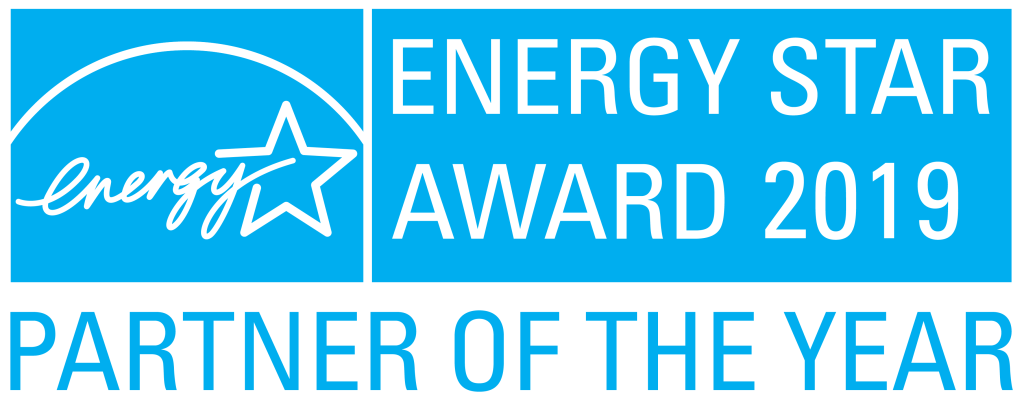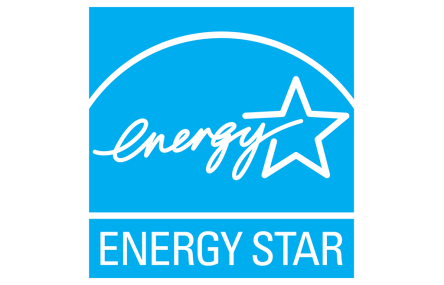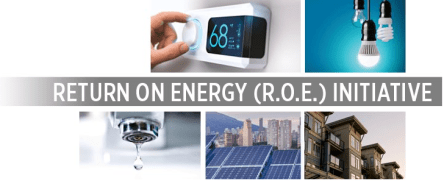Yardi has long been proud to provide energy-related technical services to clients with the aim of improving efficiency, lowering costs and meeting sustainability benchmarks. The company gained a measure of its impact this month in the form of an ENERGY STAR® Partner of the Year Award in the service and product provider category. The award signifies that Yardi demonstrates exemplary leadership, innovation and commitment to environmental protection by instituting ENERGY STAR values, tools and resources within the industry, and its own operations. Since 1992, ENERGY STAR and its partners have helped American families and businesses save more than $450 billion and over 3.5 trillion kilowatt-hours of electricity while also achieving broad emissions reductions. The EPA co-manages ENERGY STAR, a voluntary program that helps consumers and businesses save money and protect the environment through the adoption of energy-efficient products and practices. Past ENERGY STAR Partner of the Year Award recipients include familiar companies such as JPMorgan Chase & Co., Northwestern University and HP Inc. “This award reflects our clients’ success in using ENERGY STAR resources to achieve their corporate and community sustainability goals. We are proud of those achievements and look forward to helping our clients and the industry gain even more benefits from ENERGY STAR,” said Anant Yardi, founder and president of Yardi. “Energy efficiency is a core component of our mission as a real estate technology provider. We thank the EPA for this high honor and will continue applying technical innovation to current and emerging industry challenges,” said Akshai Rao, vice president of energy and procurement at Yardi. Yardi’s ENERGY STAR-related initiatives in 2018 that the EPA evaluated included: Benchmarking more than a thousand buildings in ENERGY STAR Portfolio Manager® in 27 compliance jurisdictions every month. Yardi also benchmarked other properties in non-compliance areas for other programs Documenting its real estate clients’ success in using energy optimization software to maximize efficiency and reduce costs. One example is SL Green, New York City’s largest office landlord, which used intelligent energy optimization software from Yardi to increase the ENERGY STAR score for one of its properties from 48 to 76. SL Green also won the 2018 Earth Building of the Year Award from BOMA NY Sponsoring the BOMA Water and Waste Challenge Program, which helps property managers track, gather and analyze data. Yardi solutions supported W2 participants by automating data capture and generating insightful reports. One client, Kilroy Realty Corporation, reduced water use at a Class A building by 30% Promoting ENERGY STAR value propositions like higher occupancy and rent, increased asset values, actionable benchmarking information and favorable impressions among investors. The company did this through webinars, industry trade shows and publications, client user conferences, executive briefings, corporate blog posts and other activities Earning ENERGY STAR certification for its corporate headquarters in Santa Barbara, Calif. Working with EPA to improve ENERGY STAR Portfolio Manager software functionality in such areas as building energy performance measurement and reporting Yardi will receive the ENERGY STAR Partner of the Year Award at a ceremony in Washington, D.C., on April...
What’s Your Energy Strategy?
Get These Five Benefits
Did you know that the average commercial building wastes 30% of the energy it consumes? Or that energy costs will rise as much as 60% in areas of the U.S. by 2028? It’s true, according to an analysis and calculation of Yardi consolidated property data. These facts should be red flags for property management companies without an energy strategy in place. Luckily, adopting an energy strategy is not as daunting as it may seem. In fact, taking incremental steps towards a comprehensive strategy can generate measurable savings in a matter of weeks with a relatively modest investment. Here are five reasons why an energy strategy is good business: Reduced costs Operating expenses such as utilities and maintenance are easy first targets for reduction through an energy strategy. By taking advantage of usage data and trends, property managers can quickly identify excessive usage, lower maintenance costs and identify benchmarks for energy consumption across a portfolio of properties. Increased value Assets that cost less to operate and generate higher rents quickly become more valuable. An energy strategy promotes both savings and revenue by reducing operating costs, reducing the need for rental concessions, making properties more marketable and, as a result, increasing potential net operating income. Efficient accounting The benefits of automating property management processes such as payment processing, procurement, vendor management, etc., are now viable for energy management. Gone are the days of a stack of paper utility bills waiting to be opened and paid. Automated utility expense management sends digital invoices to accounting staff and mines data from smart metering equipment to validate usage. With a relatively low upfront investment, property managers can reduce duplicate payments, avoid late fees and be confident that their utility spend is accurate. Happy tenants Doing business in a building that is LEED certified or meets ENERGY STAR® benchmarks can make a tenant feel proud, comfortable and socially responsible. They’re also less likely to call for maintenance with modern, energy efficient equipment servicing their building. That satisfaction reduces tenant turnover and increases competition for your space. Happy investors A successful energy strategy demonstrates to investors that your organization is proactively maximizing occupancy and revenue, and minimizing operating expenses. It’s also a great way to reassure investors that your properties are working to achieve local, state and federal government energy conservation goals, as well as boosting Environmental, Social and Governance scores for socially conscious investors. Need help getting started? Start with a focus on utility expense management as an approachable first step with low upfront investment required. From there, you may take bigger steps, such as energy intelligence at the property level with real time metering, ENERGY STAR benchmarking and prescriptive alerts for any property in your portfolio. The next level of investment is characterized by advanced energy automation in HVAC equipment, fault detection, diagnostics and demand management. No matter which level of strategy you take, the potential return on investment is tangible and may be evident as soon as your next utility invoice. Yardi Pulse clients have seen as much as 5% annual savings in energy costs with the first two incremental steps alone (utility expense management and energy intelligence). Annual energy savings of up to 15% or more are expected for properties that implement further energy automation measures. If you are a current Yardi Voyager user, contact our team for a complementary consultation. We’ll do an analysis to compare your costs with benchmarks. It’s a simple way to get an idea of the potential savings that an energy strategy can deliver to your...
Under the Sun
Advancements in solar power
Solar energy technology is becoming more powerful and versatile than ever. That’s a good sign for property owners seeking cost and sustainability benefits. According to the Solar Energy Industries Association, enough solar photovoltaic capacity—created when semiconducting materials convert sunlight into electricity—was installed in the U.S. in 2018 to power 12.3 million homes, and total installed capacity is expected to more than double over the next five years. A recent milestone in solar energy development was San Jose, Calif.-based SunPower’s development of the world’s most powerful solar cells for the residential market. They’re capable of delivering 60% more energy than conventional solar panels over 25 years using the same amount of roof space. That might be of particular interest to residents of the manufacturer’s home state, which in 2018 became the first to require that all new homes have solar power. In another significant breakthrough on the residential front, engineers at Belgian university KU Leuven have created a solar panel prototype capable of converting sunlight directly into hydrogen using moisture in the air. This would give households their own greenhouse gas-free source of fuel for cooking, heating and other activities. They wouldn’t have to rely on industrial-scale production of hydrogen gas, which generates greenhouse emissions. The technology remains under development and it’s unclear when it will be brought to market. Other developers are working on harnessing solar energy to melt snow on roads during the day and light them at night, power home window curtains and warm car seats. Additional projects encompass everything from battery storage enhancements to aesthetic matters like customizing cells to blend into a roof’s design. Energy Sage, a service that connects homeowners with solar equipment installers, says, “For those considering solar panels systems, this long list of solar panel technology innovations from...
Energy Upgrades
PM Expo Case Studies
The biggest annual industry event of its kind in Canada provided visibility for one of the key issues in property management. A session at the Property Management Exposition & Conference (PM Expo 2018) in Toronto featured case studies of building energy system upgrades from commercial real estate services provider Colliers International and Triovest Realty Advisors Inc. Martin Levkus, regional director for Yardi Energy, moderated the session. Phillip Raffi, national energy and sustainability manager for Colliers, a Yardi Energy client, discussed a recent update of a 665,000-square-foot mixed-use building in Toronto. The company leveraged utility incentive programs and rebates to offset the costs of retrofitting lighting, installing variable fan drives, redoing the exterior sealant to reduce heat loss through the building envelope, and replacing the building’s boiler with two smaller units. The project produced annual natural gas savings of $33,000, the company’s first BOMA Best Platinum certification in Canada and a 72% reduction in energy use intensity, the energy used per square foot per year. Colliers, which offers energy management planning for all of its properties, has targeted a 5% annual energy reduction for the building. Kit Milnes, national sustainability manager for Triovest Realty Advisors Inc., described enhancements to two properties in Mississauga and Edmonton, Canada, as “the right tools that spark the right actions.” Upgrades included real-time metering and submetering, lighting retrofits, integrated building automation system operations and an optimized HVAC system. The lighting retrofit produced 500,000KwH savings per year at the Mississauga building, which also earned an ENERGY STAR® score of 91 and a BOMA TOBY (Outstanding Building of the Year) award. Meanwhile, the Edmonton property earned LEED EBOM (Existing Buildings: Operations & Maintenance) Gold certification, a 97 ENERGY STAR score and multiple local and national awards for energy performance. The key to...
Charged Up
ELECTRIC VEHICLES + ENERGY STAR
ENERGY STAR® certifications have gone mobile. Originally geared toward properties and consumer products, the U.S. Department of Energy’s (DOE’s) efficiency program now includes a scoring system for electric vehicle (EV) charging stations. In December 2016, the U.S. Environmental Protection Agency (EPA) finalized its inaugural ENERGY STAR specification for electric vehicle chargers. An ENERGY STAR-certified charging station is defined as using 40% less energy than an uncertified one. As EV technology increases its foothold in the marketplace, its capabilities and ENERGY STAR endorsement offer substantial cost, convenience and sustainability benefits. Moving toward EV-compatibility EV sales are expected to top 1 million by 2020, up from about 200,000 in 2017. Some observers predict EVs will be the dominant mode of propulsion for cars by 2030, making charging an increasingly significant value consideration for multifamily and commercial property owners. Driving EVs and using ENERGY STAR-certified chargers can produce: Savings—EVs cost about half as much to drive per mile than standard gasoline-powered vehicles, according to this calculator. Property owners hosting charging stations for tenants and customers can control costs by anticipating the need for new EV equipment, upgrading electrical service to accommodate it, taking operations and maintenance costs into account, and researching incentives that make installations easier and less expensive Efficiency—EVs convert about 59–62% of the electrical energy from the grid to power at the wheels, whereas conventional gasoline vehicles convert about 17%–21% of the energy stored in gasoline to power at the wheels Convenience—Most EV charging happens at home or work, giving property managers who offer this capability a competitive advantage. But what if those places aren’t available? Locate the nearest public charger location in the U.S. here Smart technology—Some ENERGY STAR-certified EV charger models use Wi-Fi technology for remote power monitoring and control of the charging state...
CA Benchmarking
Yardi Smart Energy Suite is Ready
A California energy benchmarking law going into effect next June requires multifamily property owners to complete a potentially daunting array of information gathering and reporting requirements. Yardi’s energy management software and experts stand ready to make the process easy and painless. Under the mandate, known as AB 802, owners of multifamily buildings with more than 17 units, or gross floor area of 50,000 square feet, must report information on energy use from all energy meters using ENERGY STAR® Portfolio Manager®. Reports to the California Energy Commission for 2018 are due to the California Energy Commission on June 1, 2019, and annually thereafter. Similar requirements for commercial buildings went to effect in June 2018. Actions the commission recommends to meet the June 1 deadline begin by Feb. 1, 2019. Each building’s energy efficiency will be disclosed on a yet-to-be-established state website. “Publicly disclosing the performance of buildings will allow building owners and tenants to make better informed purchasing and leasing decisions, and the general public to better understand the buildings in which they live and work,” according to the California Energy Commission. Yardi is an ENERGY STAR Partner and is helping California users of the Yardi Smart Energy Suite get ready for AB 802. All owners of more than 330 California properties that rely on Yardi for ENERGY STAR benchmarking have retained the company in preparing for AB 802. Yardi Utility Expense Management, an element of the Yardi Pulse Suite, centralizes utility cost and consumption data and sends it directly into ENERGY STAR Portfolio Manager. Portfolio Manager is an online tool for tracking energy and water consumption and greenhouse gas emissions. It also allows comparisons of a building’s energy performance against similar-type buildings. Elements of AB 802 compliance include setting up multiple measurement criteria for...
Tenant Power
Awards for Smart Energy Use
The U.S. Environmental Protection Agency’s ENERGY STAR program has helped business owners and individuals save money and protect the environment through energy efficiency since 1992. Now there’s a new dimension to the program. In the fall of 2017, EPA launched the ENERGY STAR Tenant Space pilot program to promote energy efficiency in commercial tenant spaces. EPA recently recognized 48 office tenants that demonstrated commitment to energy efficiency and environmental stewardship. The award recipients met five energy efficiency criteria during the 10-month Tenant Space pilot program: estimate energy use, meter energy use, light efficiently, use efficient equipment and share data. Recipients of 2018 ENERGY STAR Charter Tenant Space Awards include Forest City Realty Trust Inc., Kilroy Realty Corp., LinkedIn and Shorenstein Realty Services LP. Some organizations, such as Cushman & Wakefield, Harvard Pilgrim Health Care, JLL and JPMorgan Chase, earned recognition for multiple locations. “Adhering to sustainable best practices not only enhances our bottom line, but it also highlights our broader efforts to consistently act as a responsible corporate citizen,” Jason Kern, CEO for LaSalle Americas, said in a statement in June following the designation of LaSalle’s corporate headquarters in Chicago as a Charter Tenant Space Award recipient. Along with verifying its electricity meters, LaSalle estimated the office’s energy consumption using an online tool developed by EPA with analytical support from the U.S. Department of Energy. The company documented its nearly 100% LED lighting fixtures, daylighting/occupancy sensors and nearly 100% ENERGY STAR certified equipment and appliances. LaSalle also established an ENERGY STAR Portfolio Manager account to measure energy and water consumption. The voluntary Tenant Space program was created by the Energy Efficiency Improvement Act of 2015, which encourages owners and tenants to implement high-performance energy efficiency measures in commercial buildings. EPA continues to analyze the...
Score Alert
New ENERGY STAR Metrics
The U.S. Environmental Protection Agency’s ENERGY STAR® score gives building owners a snapshot of their property’s energy performance by comparing it to a database of similar buildings. Performance metrics in ENERGY STAR Portfolio Manager®, an online tool for tracking energy and water consumption and greenhouse gas emissions, changed on Aug. 26 to reflect the most recent market data available. This update is part of EPA’s standard process to “keep ENERGY STAR metrics as current as possible, and reflective of current market performance,” the agency says. The revised ENERGY STAR criteria incorporate the most recent Commercial Buildings Energy Consumption Survey (CBECS), which constitutes the baseline against which owners compare their buildings to earn certification. In short, the change is an effort to make sure that the “similar building” comparisons for performance are as accurate as possible. EPA continues, “The most recent market data available shows an overall improvement in the energy performance of the U.S. building stock in recent years. So when Portfolio Manager metrics are updated on August 26, ENERGY STAR scores and other performance metrics will, on average, go down.” The new calculations “will be applied across all time periods, which means scores and metrics for all historical benchmarking data will change. By applying this update across all time periods, you’ll continue to be able to analyze changes that are a result of your own activities, rather than changes in underlying market data.” “The change is significant for buildings pursuing LEED or Green Globes certification, for buildings with GSA or other government space leases tied to an ENERGY STAR score of 75, for buildings in cities with mandatory benchmarking, and for the more than 450,000 commercial properties that have an ENERGY STAR score,” says Baltimore environmental attorney Stuart Kaplow, publisher of a green...
Better Buildings
LA Leads Energy Efforts
A recent report presented by Better Buildings®, an initiative of the U.S. Department of Energy, and Global Real Estate Sustainability Benchmark (GRESB), an association dedicated to assessing and improving the sustainability performance of real estate assets, offered insight into the impact of sustainability certifications on commercial properties’ business performance in Los Angeles. David Hodgins, executive director of Los Angeles Better Buildings Challenge, presented findings showing that Class B buildings in Los Angeles with ENERGY STAR scores of 75+ achieved significantly higher occupancy rates and rent per square foot than non-certified Class A buildings there. Better Buildings’ findings were based on data from 263 ENERGY STAR-certified buildings and 526 LEED Certified buildings that illustrated the impact of ENERGY STAR benchmarking and certification on building occupancy and rental income. Co-presenter Dan Winters, head of Americas at GRESB, indicated the numbers are similar in other cities where studies have been done. Among the other Los Angeles findings: The average occupancy for ENERY STAR-certified buildings is 90%, vs the 84% current overall occupancy rate, which generates substantial gross annual rent increases The gross current asking rent per square foot (PSF) for ENERGY STAR buildings is $2.15, vs the current asking rent of $2 which also generates substantial gross annual rent improvements Los Angeles is benchmarking its most energy-intensive facilities and has pledged to reduce the energy intensity for 30 million square feet of city-owned and private buildings by 20% by 2020. More than 25 owners of large commercial buildings joined the challenge and report their results annually to help others save money and energy. The Los Angeles Existing Buildings Energy and Water Efficiency ordinance (EBEWE) has made energy efficiency a high priority in the city. This focus is paying off in multiple ways. The city ranked No. 1...
Benchmarking Bonus
NAA Return on Energy
Currently, over 45% of the US commercial building market uses the ENERGY STAR®, the US EPA’s voluntary certification program designed to measure energy efficiency and improve resource management. At the heart of ENERGY STAR® lies the ability to track energy usage data to reduce energy consumption and improve building performance. “It all starts with taking a look at what you have and seeing what [information] you’re tracking and what data is available,” Craig Haglund, Program Manager, for the US EPA’s ENERGY STAR program, said in the National Apartment Association’s recent webinar, Financial Success with Energy Benchmarking. With comprehensive data collection and analytics capabilities, US EPA’s Portfolio Manager works in concert with ENERGY STAR for complete resource management oversight. “They say ‘you can’t manage what you can’t measure,’ which is 100% true,” Haglund continued, “but that misses what you can do with all that data.” Whole Building Consumption For building owners and managers interested in tracking their energy, water and waste metrics, ENERGY STAR provides an easy, comprehensive management tool: Portfolio Manager. With Portfolio Manager, building data can be tracked and analyzed. Users can create customized reports and monitor changes in energy, water, greenhouse gas emissions and more. “Portfolio Manager literally includes hundreds of measurement metrics,” explained Haglund. “Standardized reports can help users assess portfolio performance and share that information or integrate it into other presentations.” Those measurement metrics can be applied to any sized property portfolio, from one building to, in the case of East Coast real estate services firm Bozzuto Management, 63,000 units spread out over 220 communities and representing 2.1 million square feet of mixed-use development. “We have been using Portfolio Manager since 2012,” said Bozzuto’s Director of Sustainability, Peter Zadoretzky. “Over the last couple of years, we’ve gone from a messy,...
Every Watt Counts
Benchmarking in the Big Apple
On December 28, 2009, New York City Mayor Michael Bloomberg signed Local Law 84 (LL84), mandating annual energy reports for any privately owned buildings over 50,000 square feet. (In October 2016, the city expanded LL84 and LL88 to include buildings 25,000 Sq. Ft. and higher, though, this doesn’t officially go into effect until 2018.) Enacted as part of the city’s Greener, Greater Buildings Plan (GGBP), LL84 was designed to help building owners not just measure energy use, but to develop actionable energy efficiency strategies based on that data. By the time the first benchmarking report was released in 2012, the city had gathered energy usage information from 1.8 million square feet of commercial and residential space, making it one of the largest accumulations of benchmarking data gathered for a single jurisdiction. “Buildings account for 75 percent of all greenhouse gas emissions in New York City, yet many property owners and managers do not know they [can] be a part of the solution and save money by making their buildings more energy efficient,” said Mayor Bloomberg in a statement after the first benchmarking reports were released in 2012. “This benchmarking report will help us understand where we can act most quickly to significantly reduce GHG emissions and achieve our PlaNYC goals.” Lights, Meters, Action Often considered the low-hanging fruit of energy efficiency implementation, improving a building’s lighting system can dramatically reduce energy consumption. In New York City, roughly 18% of energy use in non-residential buildings can be attributed to lighting, which also accounts for 18% of the city’s carbon emissions. With the goal of reducing greenhouse gas emissions by 30% within the next 15 years, Local Law 88 (LL88) was designed to address the need to encourage lighting upgrades for improved energy efficiency and reduced...
The Pulse of Energy
Yardi Energy
With the ability to collect, analyze and communicate real-time energy information, Pulse Energy adds the power of data to Yardi Energy arsenal. The Power of Data Over the last few years, Jeff Rambharack and the Pulse Energy team have worked to collect data on over a million businesses throughout the US and Canada. That data drives the company’s overall approach and helps provide Pulse clients with strategies tailored to their unique challenges. The company works with utilities and individual businesses, focusing on solutions specifically for different industry segments. “We provide personalized messaging for individual businesses,” explains Rambharack. “We support over 130 different verticals for businesses segments, and we provide personal messaging within each segment. We recognize that every business is different, and we work to identify sources of energy consumption and provide targeted recommendations layered on top of our in-depth analytics we’ve developed to analyze each business’s energy consumption.” Rambharack believes the biggest benefit of this data aggregation is that it allows an energy usage analysis at every level of a company’s organization. By being able to provide personalized insights about of those levels of aggregation, Pulse clients can pursue more effective energy management policies and procedures to reduce energy waste and improve energy efficiency. “Just being able to provide insights and say ‘Hey, you should go look at building X, because we think it has some efficiency problems,’ is so valuable to our clients,” says Rambharack. “Maybe we discover that they are leaving their systems on at night or running their AC and heating simultaneously. Our analytics and extensive database help us detect these sorts of oversights and provide valuable energy consumption insight to our customers.” Tracking Usage against the Baseline One of the most valuable tools for energy management involves developing an accurate...











